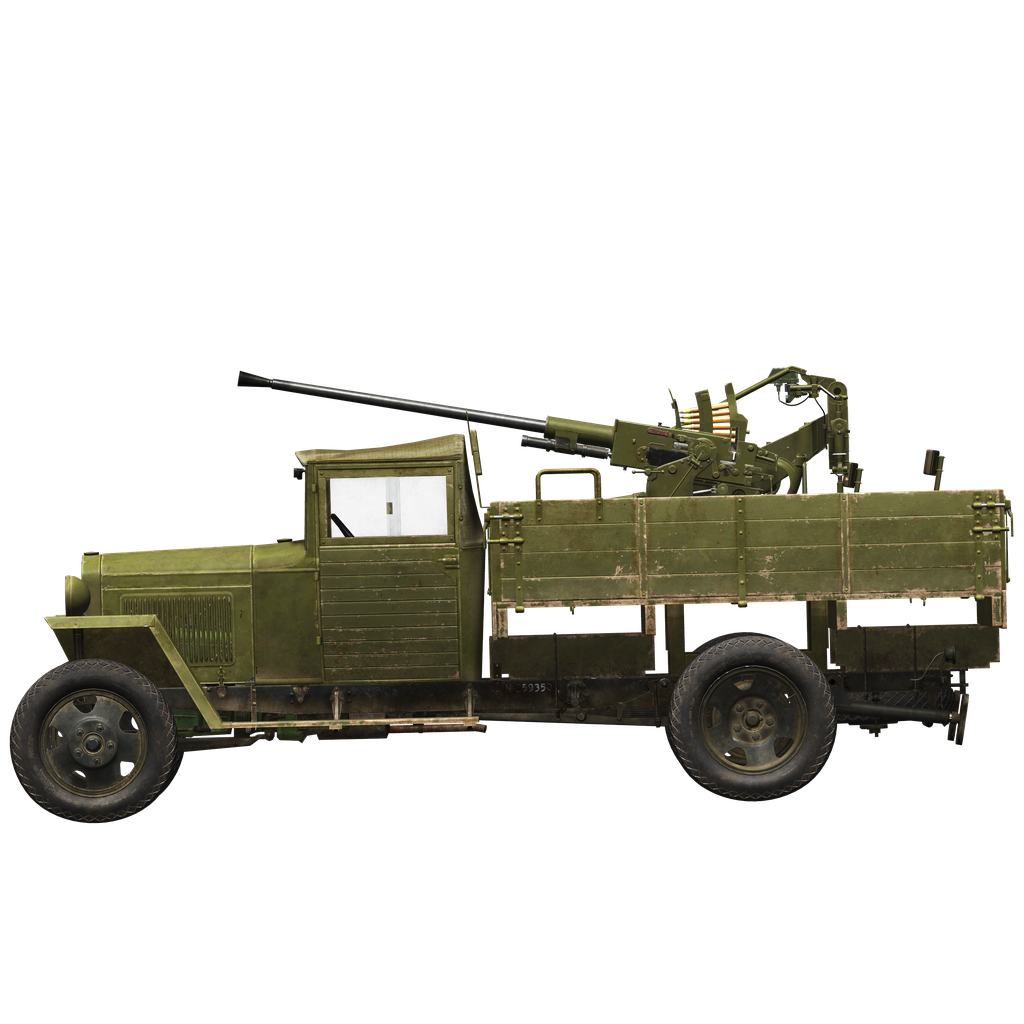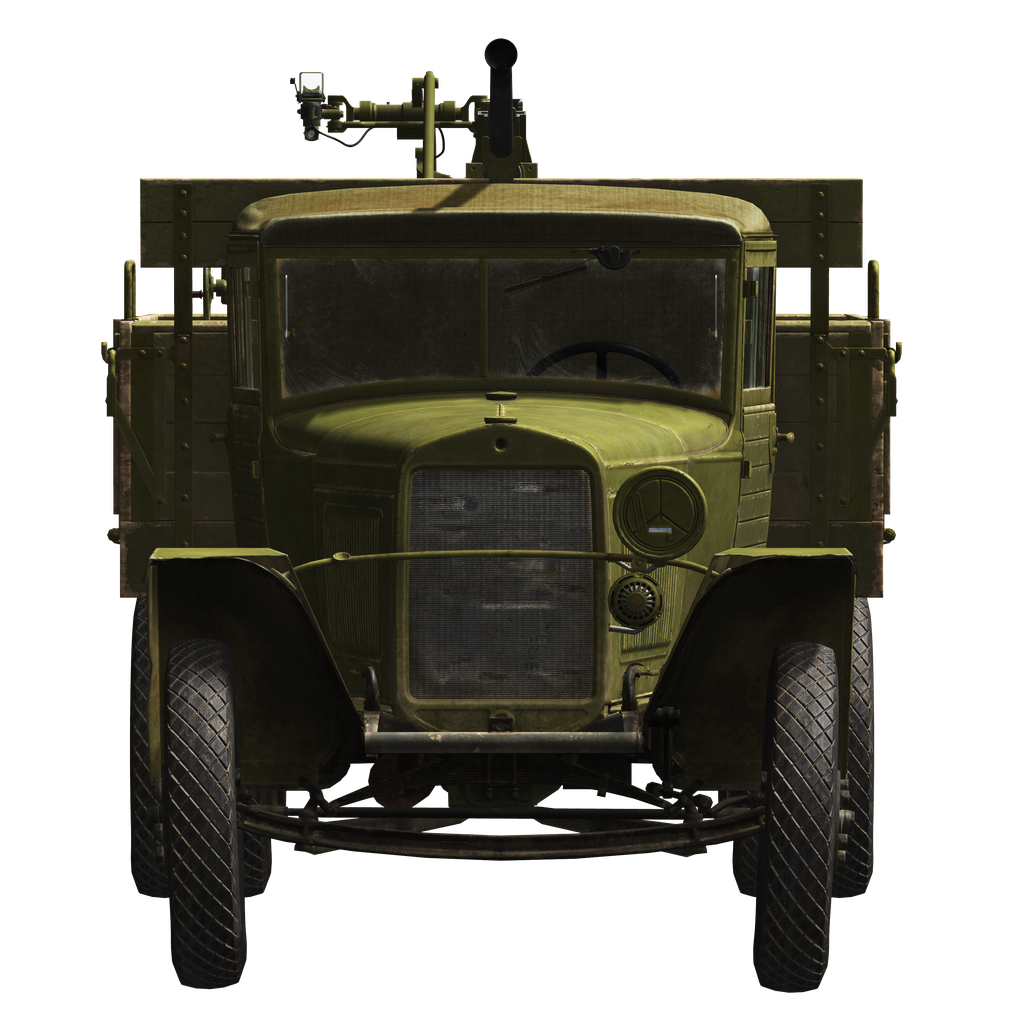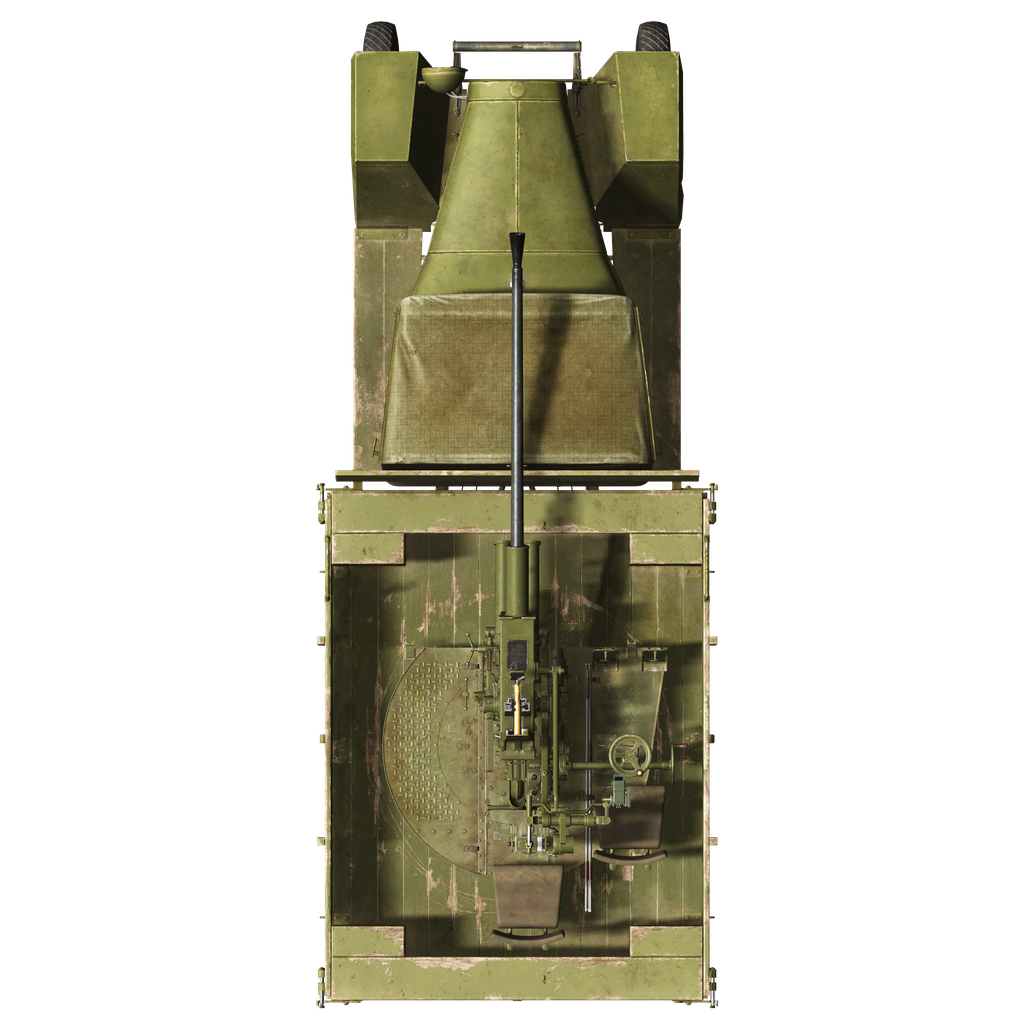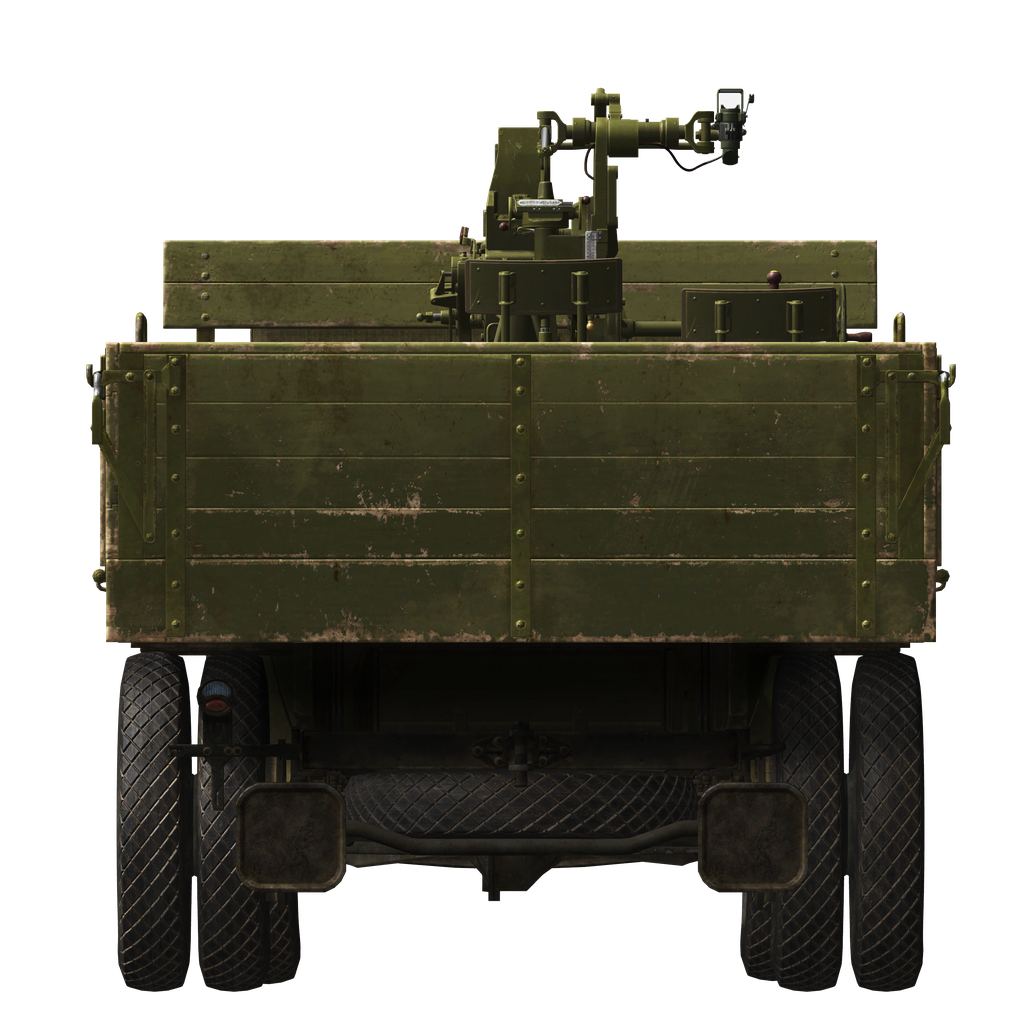The very first battles of the Great Patriotic War revealed the need to strengthen the Soviet military’s air defenses. In particular, there was a lack of mobile air defense systems capable of protecting troops on the march from low-altitude attacks, including self-propelled antiaircraft guns. The 7.62 mm quadruple machine gun mounts on vehicles available to the troops proved insufficiently effective, and heavy antiaircraft machine guns and 25 mm cannons were produced in insufficient quantities.
In 1941 the 25 mm guns were put into production, but their development in production was delayed, and by the beginning of the Great Patriotic War, the military acceptance department had not been able to deliver a single gun. In addition, with the start of the weapon’s production, it became clear that there was nowhere and no one to produce a gun carriage, so there was a proposal to install the gun on the GAZ-MM truck.
The GAZ-MM was a modernized version of the main Soviet GAZ-AA truck, which was refined both in production and operation — a rear-wheel drive two-axle truck with a wooden side platform with a load capacity of 1.5 tons. It differed from the GAZ-AA by a more powerful GAZ-M engine, reinforced suspension, new steering, and drive shaft.
The Model 1940 (72-K) 25 mm automatic antiaircraft gun was developed by the design bureau of the Kalinin Plant No. 8 under the direction of M.N. Loginov. It was a single-barreled small-caliber automatic antiaircraft gun with automation arranged according to a short recoil scheme, while the vertical wedge bolt moved in a direction that did not coincide with the direction of movement of the barrel. The gun barrel could easily be replaced in the field by the crew — replacement was made in case of overheating during continuous firing or damage. The upper part of the gun mount rotated, allowing horizontal movement of the gun. Fire control was provided by the K8-T collimator sight. This weapon system initially had no armor protection.
The loader manually fed clips with a capacity of 7 rounds into the magazine from above. The shells were of two types — armor-piercing solid BR-132 weighing 286 g with an initial velocity of 900 m/s and armor-penetration of 33 mm at a distance of 500 m and high-explosive fragmentation OZR-132 weighing 288 g with an initial velocity of 910 m/s. The gun had a rate of fire of 240 rounds per minute.
In total, the Red Army received about 200 of these self-propelled guns by December 1941, the production of which was interrupted by the evacuation of the Kolomna Locomotive Plant. The guns were used at the beginning of the war to counter enemy aircraft at a range of up to 2.4 km and at an altitude of up to 2 km. If necessary, they could fire at light tanks and armored vehicles.
Used sources:
M. Svirin “Stalin’s self-propelled guns. History of the Soviet self-propelled guns 1919-1945." 2008
A. Shcherbakov. “GAZ-MM”: which saved millions of lives”, “Avtomir” magazine, 2010.
A. Shirokorad “Encyclopedia of Domestic Artillery” 2000
GAZ-MM truck made at the Molotov automobile factory in Gorky in 1943 with 25 mm 72-K automatic anti-air gun installed on the special wooden platform. This truck was an improved model of GAZ-AA with more powerful engine, better steering mechanism and reinforced suspension.
The development of the 25 mm automatic regimental AA gun began at the Kalinin factory in Leningrad in 1939. It was accepted into service in 1940 and its mass production begun in 1941. However, the production of towed platforms for these guns was problematic, so 72-K guns were installed on armoured train platforms, three-axle trucks GAZ-AAA and then on two-axle GAZ-MM ones.
GAZ-MM trucks were substantially reworked for 72-K installation, the additions included:
- The special wooden platform with the gun support in the middle;
- Side flaps that created additional working space when opened (they could be lowered only to the horizontal position);
- Manually extendable rear supports for additional vehicle stability when firing;
- Ammunition crates at the platform corners containing 5 clips each;
- The barrel support arm on the forward fixed platform wall.
Unladen weight: ~2880 kg.
Length: 5.1 m.
Width: 2.0 m.
Height: 2.5 m.
Clearance: 200 mm.
Engine: GAZ-MM, petrol.
Maximum power: 50 HP at 2800 RPM.
Maximum RPM: 3000 RPM.
4 speed gearbox.
Maximum road speed:
1st: 11.5 kph.
2nd: 23.7 kph.
3rd: 43.4 kph.
4th: 65.0 kph.
Reverse: 9.4 kph.
Maximum offroad speed: 20 kph.
Fluids:
Internal fuel tanks capacity: 90 l.
Engine oil system capacity: 5 l.
Engine coolant: 12 l. of water
Endurance range: 440 km.
Maximum oil consumption: 1 l/h.
Chassis:
Rear-drive two axle truck with special wooden platform installed.
Dual rear wheels are equipped with drum brakes, forward steering wheels are single.
The truck frame is made of steel, the driver\'s cabin is composite (wood and metal) with fabric roof, engine hood is metallic.
Optional armour shield:
5 mm rolled armour.
Main gun: rifled, 25 mm 72-K.
Barrel length: 67.3.
Elevation: +85°..-10°.
Ammo: up to 147 rounds (21 clips, 7 rounds per clip).
Rate of fire: 240 rounds per minute.
Turret drive: mechanical, 9 seconds per rotation.
Ammunition:
BR-132 armour piercing solid (AP): 286 g, 900 m/s, 33 mm at 500 m.
OZR-132 high explosive (HE): 288 g, 910 m/s, 13 g explosives.
Gunsights:
K8-T collimator gunsight with automatic correction process.
Reserve iron sights.





